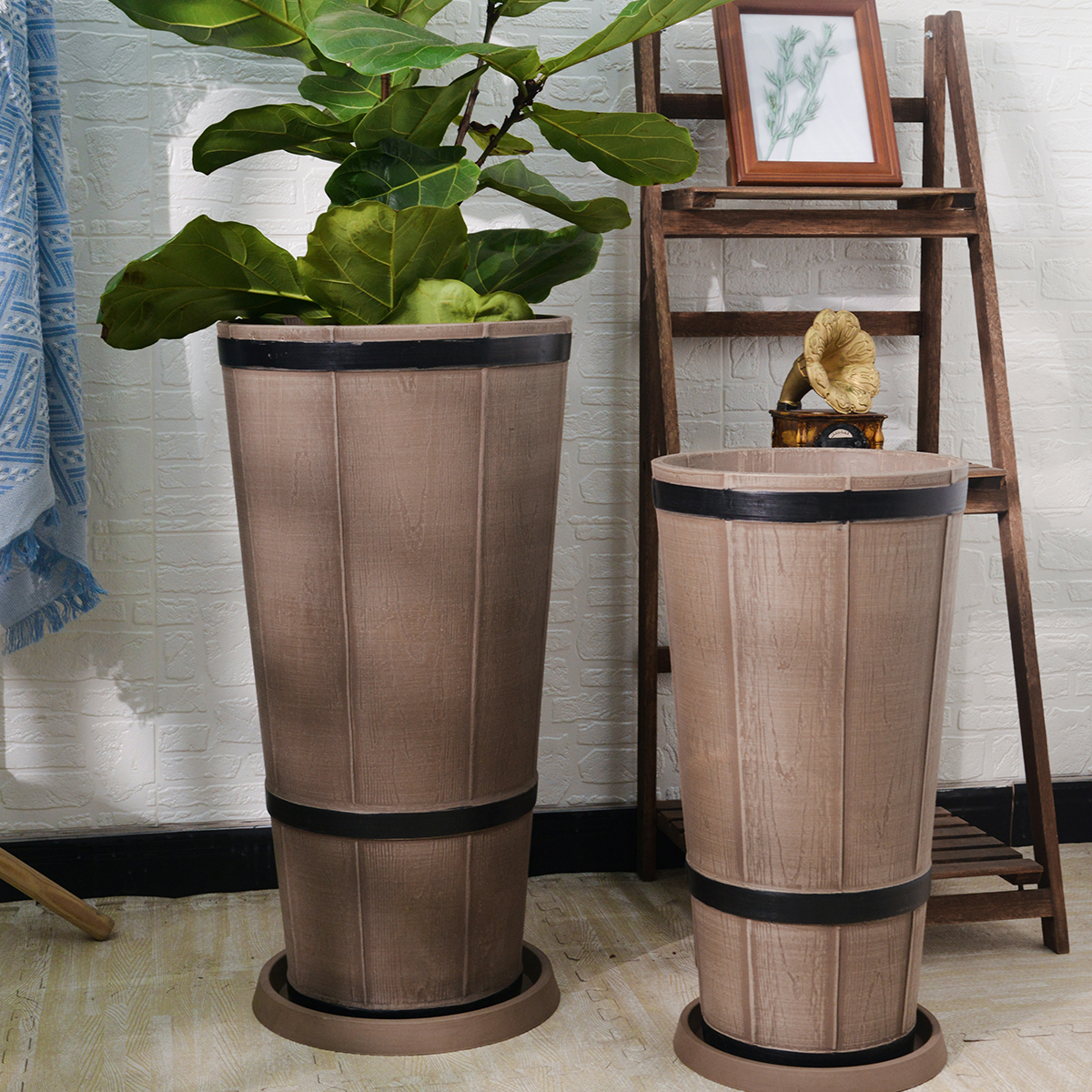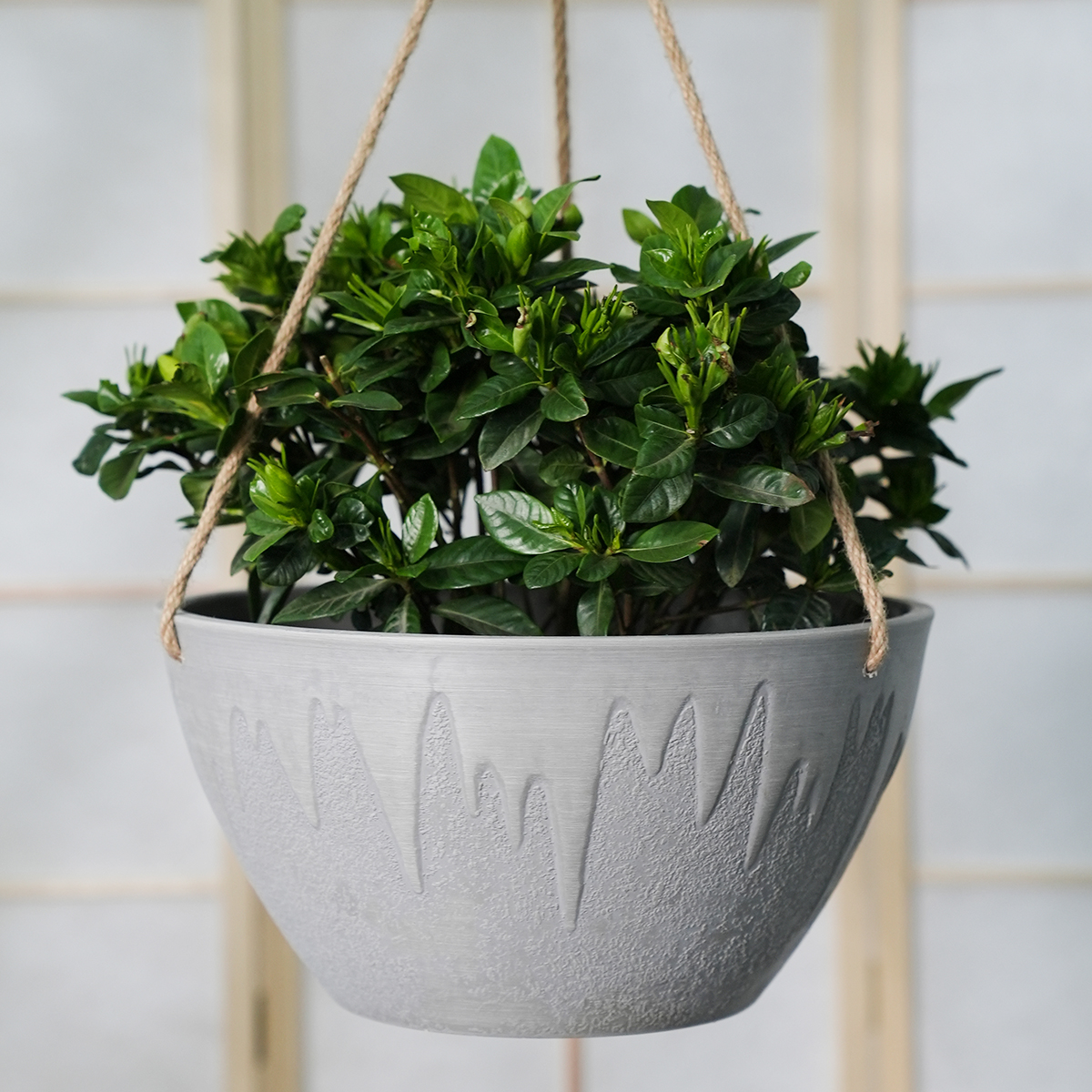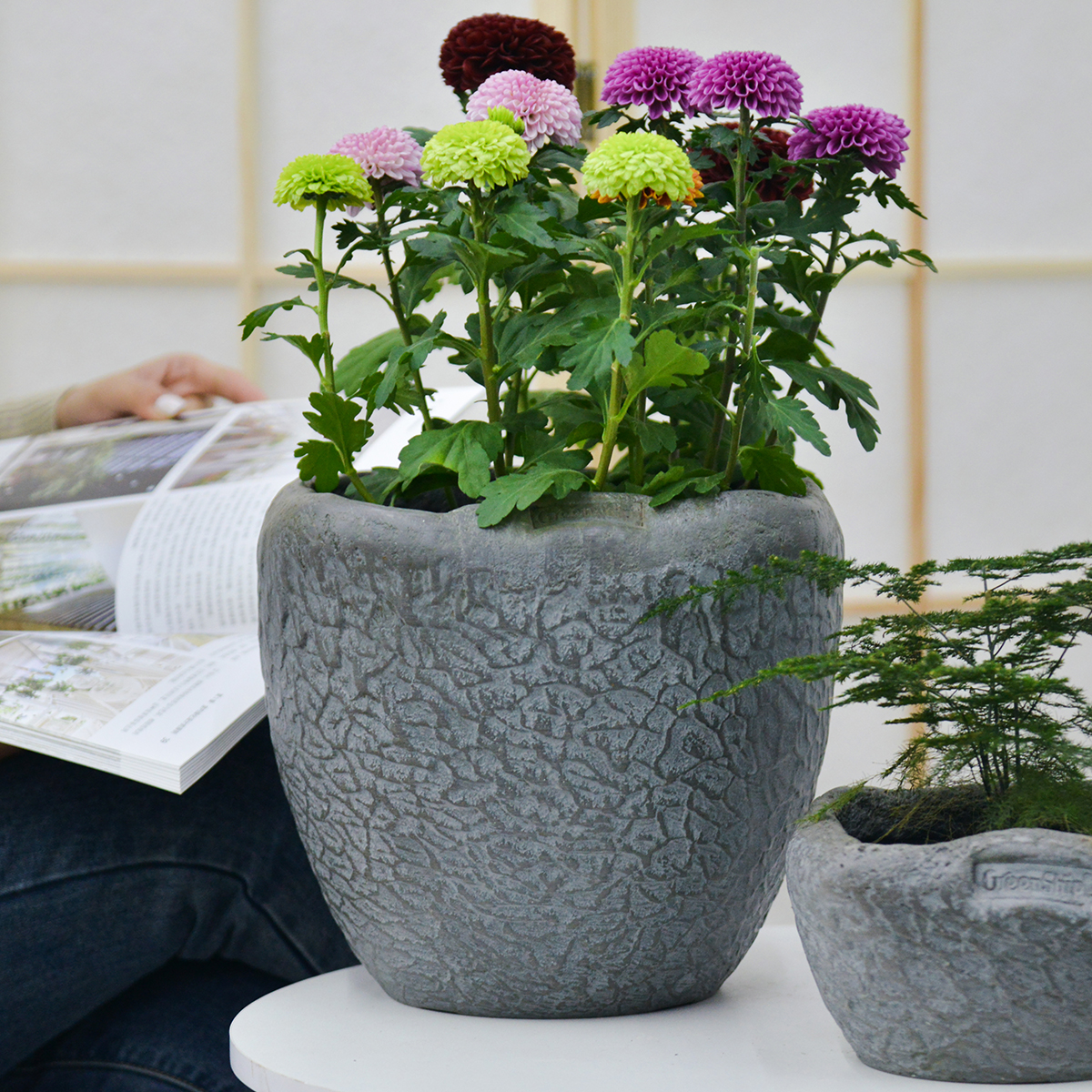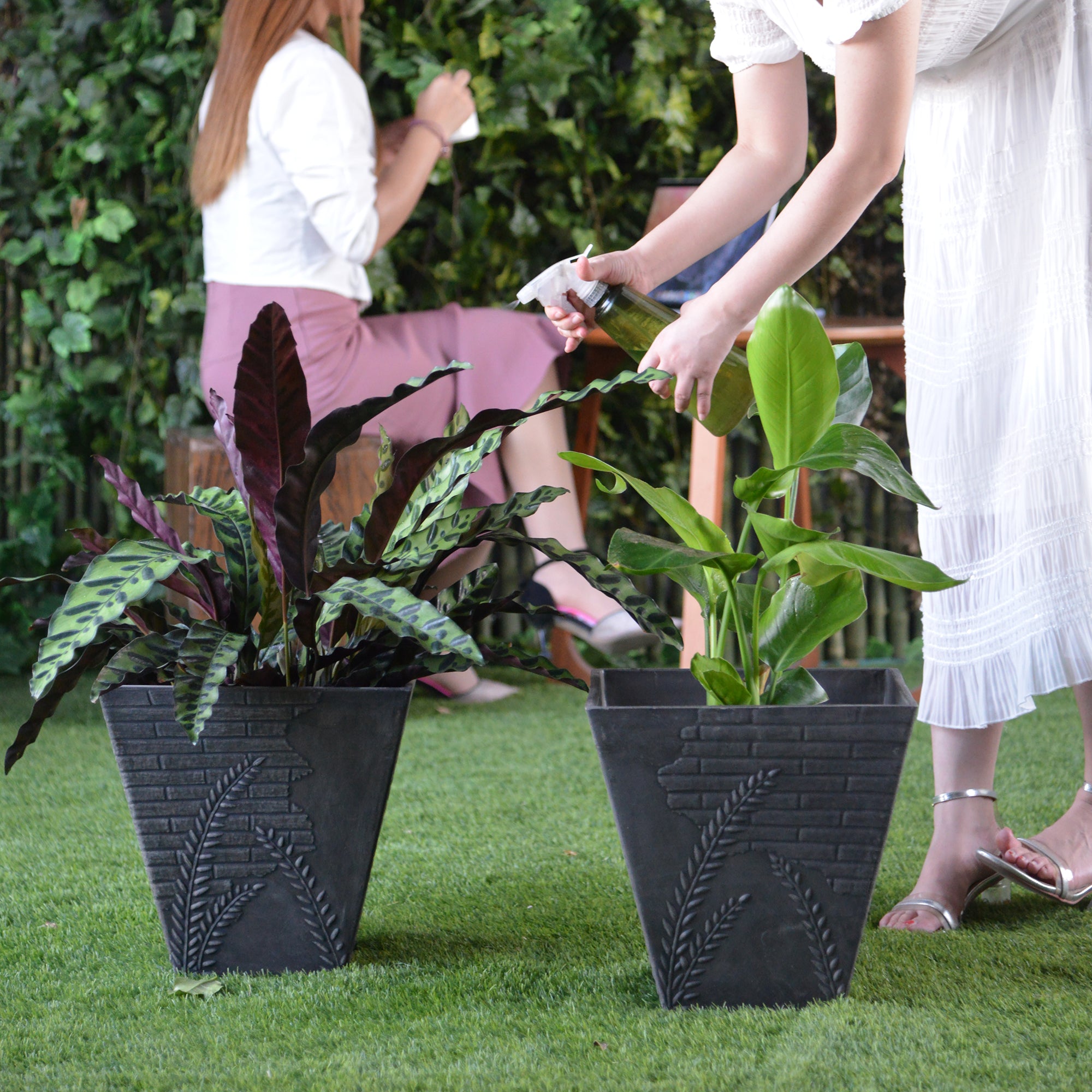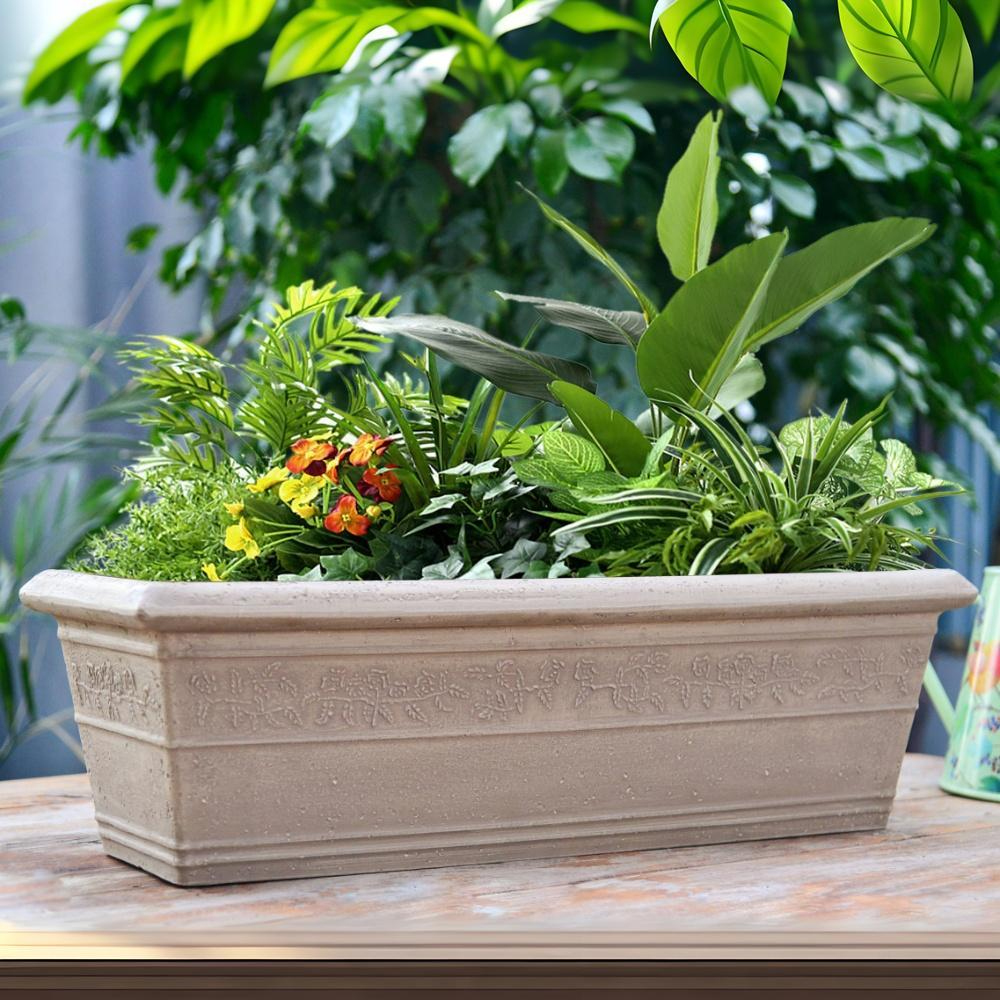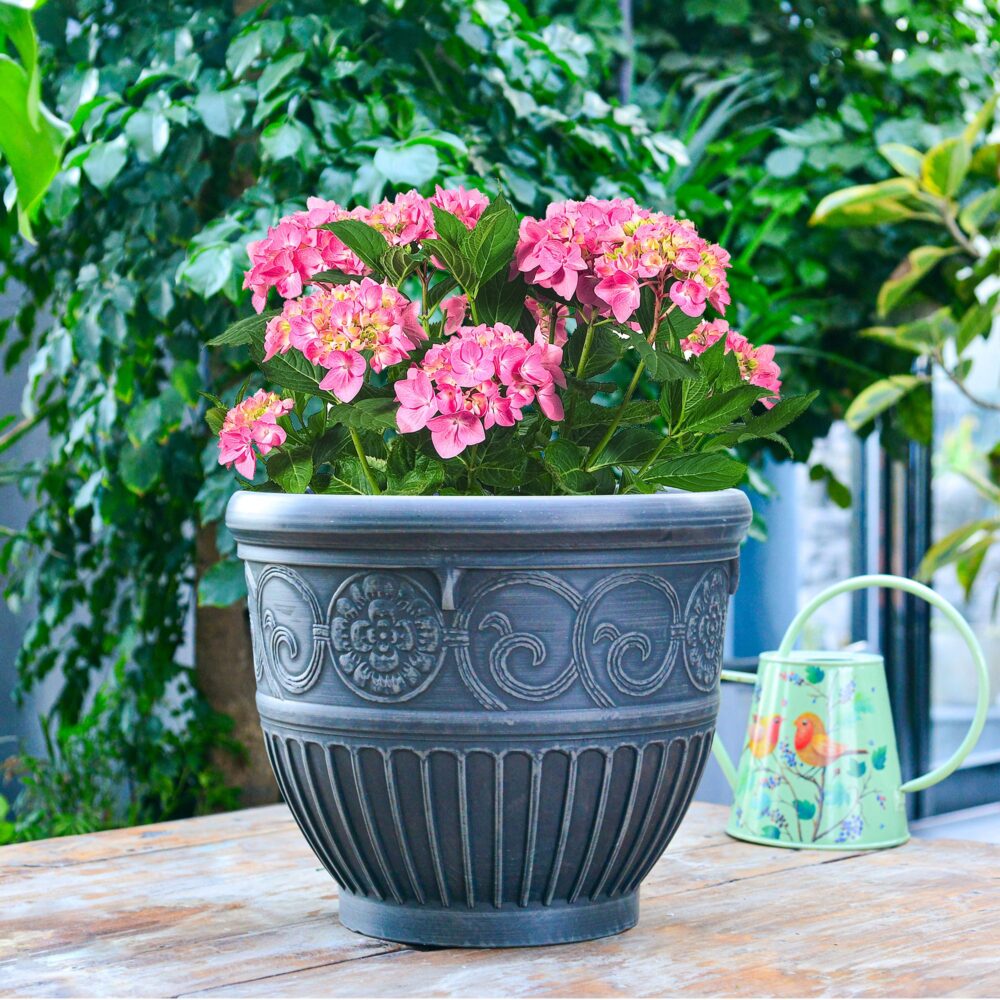Growing Hydrangeas at Home: A Beginner’s Guide to Planting & Care
Hydrangeas are beloved flowering shrubs known for their large, showy blooms and relatively easy care, making them a popular choice for home gardens. They offer a wide variety of flower colors and forms, adding beauty and charm to any landscape.
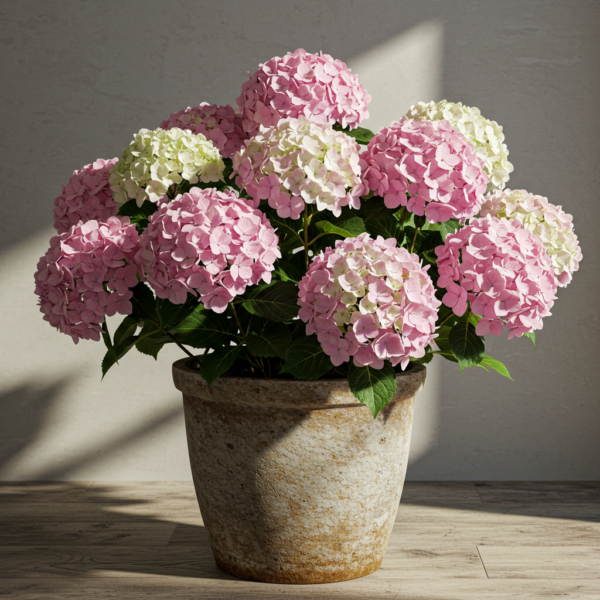
Growing Hydrangeas
Key Features of Hydrangeas:
- Flowers: Hydrangeas are famous for their large flower heads, which can be ball-shaped (mophead), lacecap, or conical (panicle). Flower color is often influenced by soil pH, especially in Hydrangea macrophylla varieties, ranging from pink in alkaline soils to blue in acidic soils. White, green, and red varieties are also available.
- Types: There are several main types of hydrangeas popular for home gardens:
- Mophead ( Hydrangea macrophylla): Classic hydrangea with large, round flower heads. Known for color change based on soil pH. Popular varieties include ‘Endless Summer’, ‘Nikko Blue’, and ‘Big Daddy’.
- Panicle (Hydrangea paniculata): More cold-hardy and sun-tolerant than mopheads. Features cone-shaped flower heads that often turn pink or reddish as they age. Popular varieties include ‘Limelight’, ‘Pinky Winky’, and ‘Quick Fire’.
- Smooth Leaf (Hydrangea arborescens): Very hardy and reliable bloomer, even after harsh winters. Features large, white, snowball-like flowers. ‘Annabelle’ is the most famous variety.
- Oakleaf (Hydrangea quercifolia): Unique oak-shaped leaves and cone-shaped flowers that turn pink/brown with age. Offers beautiful fall foliage color. ‘Snow Queen’ and ‘Alice’ are popular.
- Lacecap (Hydrangea macrophylla): Features flattened flower heads with a center of tiny fertile flowers surrounded by larger, showy sterile flowers. Similar color change to mopheads. ‘Blue Wave’ and ‘Twist-n-Shout’ are examples.
- Size: Hydrangea size varies greatly by type and cultivar, ranging from 3 feet to over 15 feet tall and wide. Garden hydrangeas typically range from 3-6 feet in height and width, making them suitable for many home garden spaces.
- Hardiness: Hardiness varies by species. Mopheads (H. macrophylla) are generally hardy in zones 6-9, while panicles (H. paniculata) and smooth leaf (H. arborescens) are much hardier, tolerating zones 3-8 or even colder. Oakleaf (H. quercifolia) are hardy in zones 5-9.
- Maintenance: Generally considered medium-maintenance. Regular watering, some fertilization, and annual pruning (depending on the type) are usually needed.
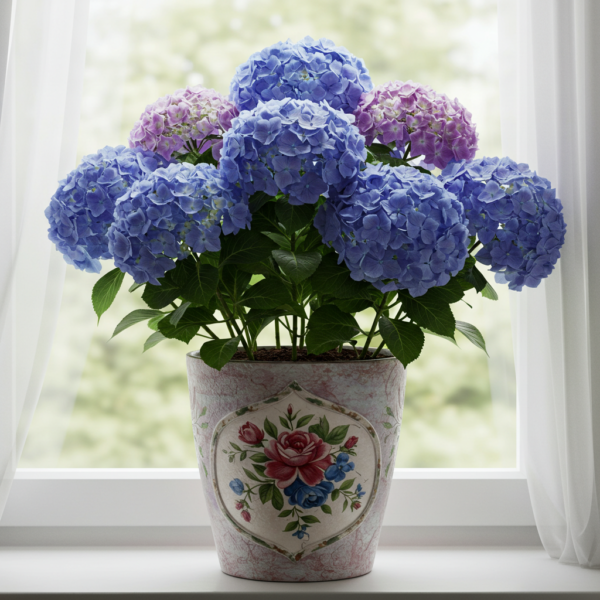
Growing Hydrangeas
Growing Hydrangeas at Home:
1. Planting:
- When to Plant: Spring or fall are ideal planting times. Spring planting allows for a full growing season to establish roots before winter. Fall planting should be done at least 6 weeks before the first expected frost.
- Sunlight: Most hydrangeas prefer morning sun and afternoon shade, especially in hotter climates. Panicle hydrangeas are the most sun-tolerant and can handle full sun in cooler regions. Oakleaf hydrangeas tolerate more shade. Mopheads and lacecaps need protection from intense afternoon sun to prevent wilting and scorching.
- Soil: Hydrangeas thrive in well-drained soil that is rich in organic matter. Amend heavy clay or sandy soils with compost, peat moss, or other organic material to improve drainage and fertility. Soil pH is important, especially for mophead and lacecap hydrangeas if you want to influence flower color (acidic soil for blue, alkaline for pink).
- Planting Hole: Dig a hole twice as wide as the root ball and just as deep. Gently remove the hydrangea from its container, loosen any circling roots, and place it in the hole so the top of the root ball is level with the ground. Backfill with amended soil, gently firming it around the base. Water deeply after planting.
- Spacing: Space hydrangeas depending on their mature size, typically 3-8 feet apart. Check the specific variety for mature size recommendations.
2. Care:
- Watering: Hydrangeas need consistent moisture, especially during their first year and during hot, dry periods. Water deeply when the top inch of soil feels dry. Avoid overhead watering to minimize fungal diseases. Mophead and lacecap hydrangeas are particularly sensitive to drought.
- Mulching: Apply a 2-3 inch layer of organic mulch around the base of hydrangeas, keeping it away from the stems. Mulch helps retain soil moisture, suppress weeds, and regulate soil temperature. Pine straw, shredded bark, or compost are good mulch options.
- Fertilizing: Fertilize hydrangeas in early spring as new growth begins. Use a balanced fertilizer (e.g., 10-10-10) or a fertilizer specifically formulated for hydrangeas. For mophead and lacecap hydrangeas, you can use fertilizers formulated to encourage blue or pink blooms depending on your desired color (use aluminum sulfate for blue, lime for pink). Avoid over-fertilizing, which can lead to excessive foliage growth at the expense of flowers.
- Pruning: Pruning depends on the type of hydrangea:
- Mophead and Lacecap: These bloom on “old wood” (growth from the previous season). Prune lightly only to remove dead or damaged wood in late winter or early spring. Avoid heavy pruning as you may remove flower buds. Some reblooming varieties like ‘Endless Summer’ bloom on both old and new wood, offering more pruning flexibility.
- Panicle and Smooth Leaf: These bloom on “new wood” (current season’s growth). Prune these types hard in late winter or early spring. You can cut them back significantly (even to the ground for smooth leaf hydrangeas) to encourage vigorous new growth and larger blooms.
- Oakleaf: Prune very lightly, mainly to remove dead or crossing branches, after flowering. They bloom on old wood and have an attractive natural shape.
- Pest and Diseases: Hydrangeas are generally relatively pest and disease-resistant. Potential issues can include aphids, spider mites, Japanese beetles, and fungal diseases like powdery mildew and leaf spot, especially in humid conditions. Ensure good air circulation, avoid overhead watering, and treat with insecticidal soap or fungicide if necessary.
3. Benefits of Growing Hydrangeas at Home:
- Stunning Flowers: Hydrangeas provide spectacular, long-lasting blooms that add significant visual appeal to gardens.
- Variety of Colors and Forms: Wide range of flower colors, shapes, and plant sizes to suit different tastes and garden styles.
- Cut Flowers: Hydrangea blooms are excellent for fresh and dried flower arrangements.
- Attract Pollinators: Hydrangea flowers attract butterflies and bees to the garden.
- Adaptable to Shade: Many types thrive in partial shade, making them suitable for gardens with less than full sun.
- Relatively Easy Care: Once established, hydrangeas are not overly demanding and reward with abundant blooms for relatively moderate care.
4. Potential Problems:
- Failure to Bloom: Improper pruning (especially on old-wood blooming mopheads and lacecaps), insufficient sunlight, lack of water, or late frosts can prevent blooming.
- Wilting: Mophead and lacecap hydrangeas can wilt in hot afternoon sun or during drought. Ensure adequate watering and provide afternoon shade in hot climates.
- Pests and Diseases: While generally resistant, pests and diseases can occur, especially in stressed plants or unfavorable conditions.
- Color Change (Mopheads/Lacecaps): Flower color in Hydrangea macrophylla can be unpredictable if soil pH is not carefully managed.
Authoritative Sources:
- Wikipedia – Hydrangea: https://en.wikipedia.org/wiki/Hydrangea (General information about Hydrangea genus)
- Missouri Botanical Garden – Hydrangeas: http://www.missouribotanicalgarden.org/PlantFinder/PlantFinderDetails.aspx?kempercode=A678 (General Hydrangea information from a reputable botanical garden)
In Summary:
Hydrangeas are a rewarding addition to any home garden, offering beautiful blooms and relatively straightforward care. By understanding their different types, planting needs, and care requirements, you can successfully grow these stunning shrubs and enjoy their beauty for years to come.
11PH
By greenship|2024-09-07T01:21:10+00:00September 7, 2024|Categories: Classic Sculpture Series|
D-11HD
By greenship|2024-09-07T02:06:30+00:00September 7, 2024|Categories: Classic Sculpture Series|
Y17V-C
By greenship|2024-09-13T06:57:19+00:00September 7, 2024|Categories: Classic Sculpture Series|
Square Planters 11.8 in. L x 11.8 in. W x 11.8 in. H Indoor/Outdoor Resin Decorative Planter
By greenship-seo|2025-04-10T08:23:01+00:00January 8, 2025|Categories: Classic Sculpture Series|Tags: Decorative Flower Pots, Self-Watering Pots|
23 inch Classic Heavy Rim Long Large Box Planter for Indoor Outdoor Patio Balcony, Durable Window Planter with Drainage Hole
By greenship-seo|2025-04-10T06:50:00+00:00January 13, 2025|Categories: Classic Sculpture Series|Tags: Decorative Flower Pots|
16-inch Round Rim Large Black Planter for Outdoor
By greenship-seo|2025-04-10T06:35:10+00:00January 17, 2025|Categories: Classic Sculpture Series|Tags: Decorative Flower Pots|

